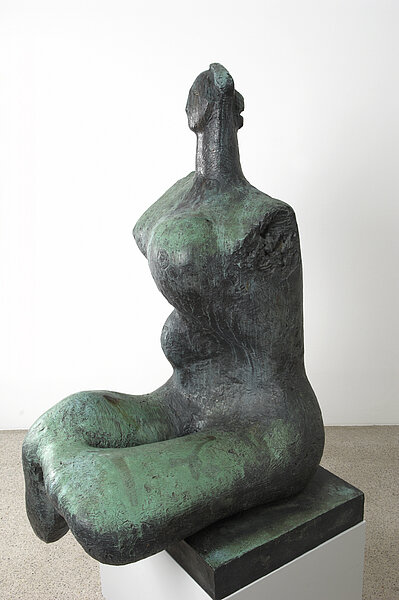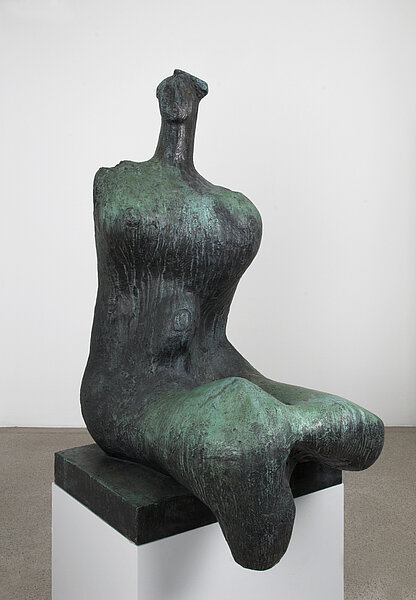
Moore, Henry
Parze / Paleolithic Woman
Parze / Paleolithic Woman
1957
| Object description | Bronze casting |
|---|---|
| Object category | sculpture |
| Material |
object:
bronze
|
| Technique |
object:
bronze casting
|
| Dimensions |
object size:
height: 152 cm,
width: 60 cm,
depth: 85 cm
baseplate:
width: 79 cm,
depth: 60 cm
object:
weight: 235 kg
|
| Year of acquisition | 1962 |
| Inventory number | P 40/0 |
| Creditline | mumok - Museum moderner Kunst Stiftung Ludwig Wien, Geschenk des Künstlers |
| Rights reference | Bildrecht, Wien |
| Further information about the person | Moore, Henry [GND] |
| Literature | Florian Pumhösel |
The English sculptor Henry Moore, born in 1898, wrote: “The sculpture which moves me most is full blooded and self-supporting, fully in the round, […] it is not perfectly symmetrical, it is static and it is strong and vital, giving out something of the energy and power of great mountains. […] At first sight sculpture should have something that is not clear and some hidden meaning. […] It should never say everything about itself all at once,” This is true of his depiction of a goddess of destiny from ancient Rome, which he sculpted in 1957. Please come close up to the sculpture and take a closer look. This seated figure in bronze has been sculpted on all sides, and her round organic shapes suggest transformation—as if she is involved in a process of metamorphosis. She has no arms, and the plump legs are cut off below the knees. You can see a full-bellied torso, with strong feminine features and accentuated breasts, navel, and bottom, and a disproportionately small head. These are archaic forms, reminiscent of Stone Age Venus sculptures. This goddess seems calm and lost in thought. She seeks no eye contact with the beholder and seems to be distanced and shy, maybe even fearful. Viewers are invited to consider the gentle monumentalism of the goddess of destiny, who myth sees as spinning the thread of life. Henry Moore said: “I know of now good work of art that does not have a secret.”
© mumok – museum moderner kunst stiftung ludwig wien



